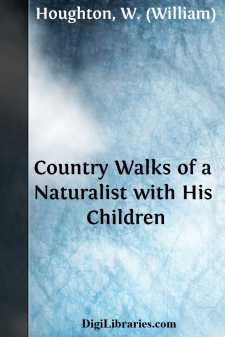Categories
- Antiques & Collectibles 13
- Architecture 36
- Art 48
- Bibles 22
- Biography & Autobiography 813
- Body, Mind & Spirit 141
- Business & Economics 28
- Children's Books 12
- Children's Fiction 9
- Computers 4
- Cooking 94
- Crafts & Hobbies 4
- Drama 346
- Education 46
- Family & Relationships 57
- Fiction 11826
- Games 19
- Gardening 17
- Health & Fitness 34
- History 1377
- House & Home 1
- Humor 147
- Juvenile Fiction 1873
- Juvenile Nonfiction 202
- Language Arts & Disciplines 88
- Law 16
- Literary Collections 686
- Literary Criticism 179
- Mathematics 13
- Medical 41
- Music 40
- Nature 179
- Non-Classifiable 1768
- Performing Arts 7
- Periodicals 1453
- Philosophy 64
- Photography 2
- Poetry 896
- Political Science 203
- Psychology 42
- Reference 154
- Religion 513
- Science 126
- Self-Help 83
- Social Science 81
- Sports & Recreation 34
- Study Aids 3
- Technology & Engineering 59
- Transportation 23
- Travel 463
- True Crime 29
Country Walks of a Naturalist with His Children
Categories:
Description:
Excerpt
WALK I.
APRIL.
WE could not have a more pleasant day, children, for a ramble in the fields than to-day. It is warm and bright, and the birds are singing merrily, thoroughly enjoying the sunshine; the little lambs are frisking about, and running races with each other. Put away lessons then, and we will have a holiday. "Oh," said Willy, "it will be so pleasant, and I will take one or two bottles, and my gauze net, because we are sure to find something interesting to bring home. Where shall we go?" "I do not think it much matters where, for there is always much to observe and to admire wherever we stroll in the country." "Let us go on the moors, then," said Jack, "for you know, papa, a little boy in the village told me the other day he had found a peewit's nest with four eggs in, and I should like to try and find one myself." Well, here we are, then; we shall have to jump over a drain or two in our ramble, and as the banks are soft it will be necessary to take great care, or we may tumble in. Ah! do you see, there are two sand-martins, the first I have seen this year. See how fast they fly, now sailing high up in the air, now skimming quite close to the ground. I have not seen any swallows or house-martins yet, but no doubt they will make their appearance in a few days. "Where do they come from, papa," asked May, "because we never see these birds in the winter? You often say, when the spring comes we shall see the swallows, and then they go away again towards the end of summer." Let us sit down on this clump of wood, and I will tell you about the swallows.
We have in this country four different species of the swallow family which visit us every year; they come to us from Africa: these are the sand-martin, two specimens of which we have just seen, the swallow, the house-martin, and the swift. A very little attention will enable you to distinguish these different kinds. The sand-martin is the smallest of the family; as the birds fly by us you notice that the back part is brown, or mouse colour; the under part white. The back of the house-martin is of a glossy black or bluish-black colour; it is white underneath; while the swallow, which is larger than the other two, has a glossy back, like the house-martin; but underneath it is more or less tinged with buff; and see, as I speak here is one flying past us. To-day is the 12th of April, about the time the swallow generally comes to this country. Now you see clearly enough its colour, and you will notice, too, a very marked difference in the form of its tail; see how much forked it is, much more so than the tail of the martin. This forked appearance is produced by the two outer tail feathers, which are much longer than the rest. Now I hope you will take notice of these differences, and call things by their right names, instead of jumbling them all up together under the name of swallow. I have not spoken of the swift, which does not visit this country till May; it is the largest of the swallow family, and has the whole of its body, both above and beneath, of a blackish-brown colour, except a small patch of dirty white under the chin.
"But, papa," said Jack, "do all these four kinds of swallows come from Africa? It is very curious to know how they can find their way backwards and forwards from Africa to this country, and how they come back to the very spots they visited the year before?" Indeed, it is a very curious thing; nevertheless experiments have been made to show that these birds return every year to the same localities.
Many years ago Dr. Jenner procured several swifts from a farmhouse in Gloucestershire, and marked them by cutting off two claws from the foot of twelve of them. Next year their hiding places were examined in the evening, when the birds had gone to roost, when Dr. Jenner found many of the birds he had marked by cutting off the two claws....


